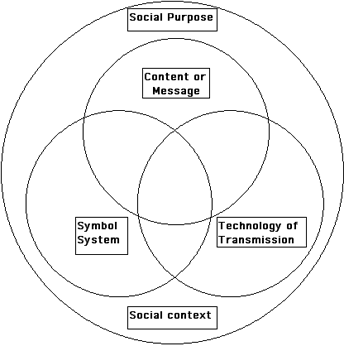Throughout history artists have explored the technological, philosophical, and scientific advancements of their age to create new ways of seeing and perceiving. Experimenting with new technologies allows artists to challenge their perceptions of the role technology plays in our society as well as explore new methods and theories of image making. In the past century new inventions in photography, printmaking, animation, film, video, audio, and the computer have been added to the traditional studio arts of drawing, painting, sculpture, and graphic design. Yet each of these inventions had specific skills and tools that limited how they were integrated into the curriculum in any art department, if they were included at all.
Today the skill barriers that once divided these technologies are dissolving into a common digital format, the computer. Digital art-making in all media has not only become accessible but ubiquitous. As a consequence, it has become increasingly necessary to learn computer skills and understand their impact on and application in the fine arts. Yet no tool is neutral. It carries imbedded within it unique symbol systems that profoundly affect our perceptions of reality. The Computer is not just a tool, it is an environment. Digital technologies have not just imposed changes in skills, but changes in how we think, how we impart knowledge, and how we create images. To prepare art students for creating digital works of art we must go beyond teaching skills and include methods of thinking and reflection so that ideas control the tool. For instance many new students entering the digital age have many misconceptions about the basic aesthetics concerning sound, sight, and motion that now predominate the digital media. Research indicates that specific curriculum content must involve discourse in symbol systems, cognitive psychology, media theories, and theories of visual design. This is the basic knowledge that transfers regardless of technological change. This proposal concerns a specific teaching method that helps students structure their thinking about new technology. It was developed from the research of Gavriel Soloman, who between 1974 and 1986 studied how learners are informed by film, television, and print. Soloman discovered that technologies should not be compared to each other. Only the media specific attributes of a technology make a difference. A technology is understood through its interaction between message, symbol system, and technology of transmission. Social purpose and social context also play a part in this. Gavriel Soloman also found that the most important aspect of a technology is its symbol system. For example, a media specific symbol system in film is montage. Discourse using this method of instruction allows students to grasp a deeper understanding of any technology they may approach.

Bibliography
Soloman, G., (1974). What is learned and how it is taught: The interaction between media message, task, and learner. In Olson, David R. (Ed.) Media and symbols: The forms of expression, education, and communication. Chicago, IL: University of Chicago Press.
Soloman, G., (1984). Television is “easy” and print is “tough”: the differentional investment of mental effort in learning as a function of perceptions and attributions. Journal of Educational Psychology, 76. 647-658.
Soloman, G., & Gardner H. (1986). The computer as educator: lessons from television research. Educational Researcher, 13-19.
Paper included in presentation given at Virginia Union University, April 19, 2001.
Selected Abstracts:
EPhilpot